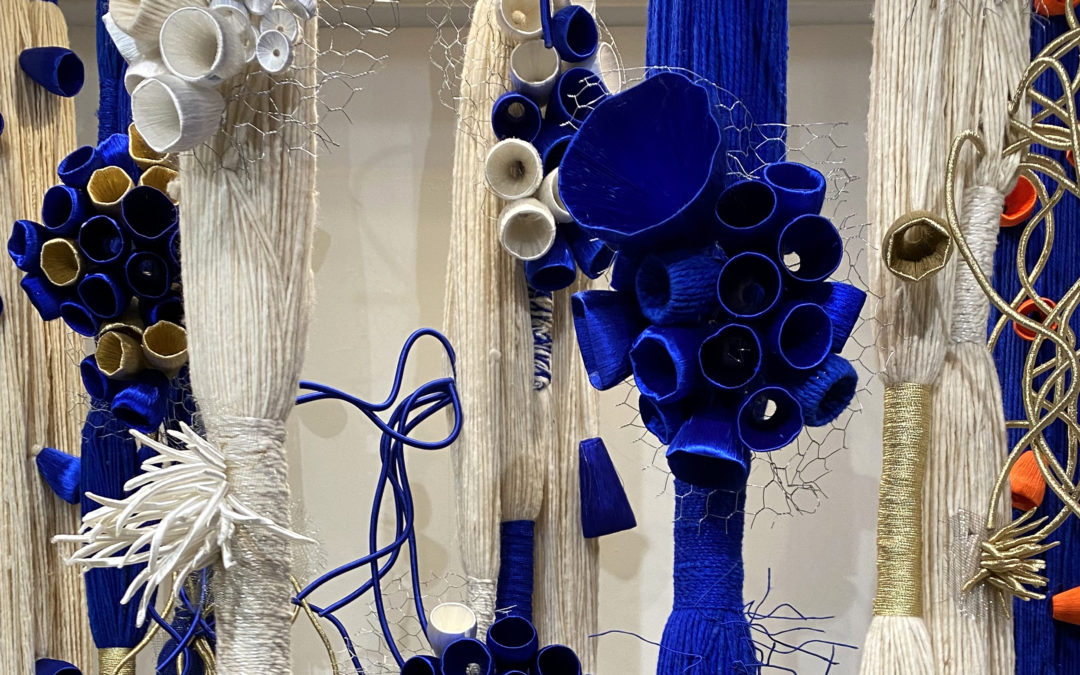Interview to the artist Ghizlane Sahli
It is a pleasure to have Ghizlane Shali with us, a Moroccan artist who was born in Meknes in 1973 and today lives and works in Marrakech, to deepen her path, investigate her production, discover her vision of the African artistic context.
Her artworks allow the materials used to transform, sublimating and taking on meaning in creations that combine the relationships between space and volume, the passion for embroidery in a fully spiritual process.
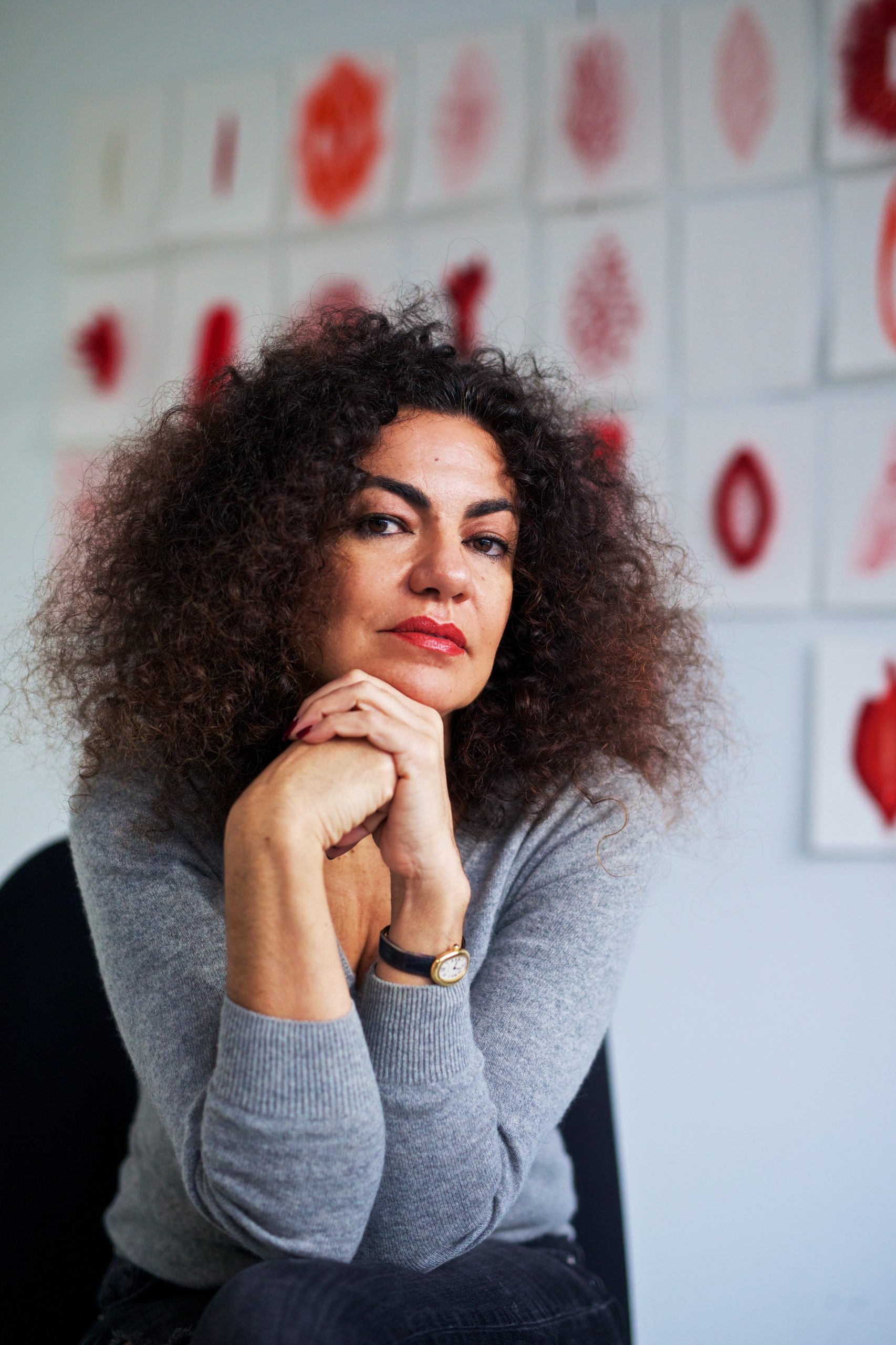
Credits: Cédrick-Isham
Courtesy: Ghizlane Sahly
SpeakART: You started your creative path dedicating yourself to embroideries and tissues: how was this passion and interest born? Ghizlane Sahli: I first studied architecture in Paris. And then I had my children. When I came back to Morocco, they were very young. I had always been in Love with embroideries and textiles. So I decided to open a studio of embroideries and I created a new brand for couture kids clothing all totally hand made. We were about 15 artisans in the studio using moroccan traditional and ancestral techniques to create contemporary clothing.
SpeakART: How you decide to focus on a more properly artistic creation?
Ghizlane Sahli: Even if I was very interested in all these embroideries. I never felt that I was in my right place. I didn’t wanted to be a stylist. It lasted during 7 years. And it was an amazing learning for me. Been an artist have always been for me the most beautiful thing in the world. I didn’t even allowed my self dreaming about it, thinking it was so inaccessible. But then life put me in that world. And I really felt connected with myself and I was finally were I have always belong!
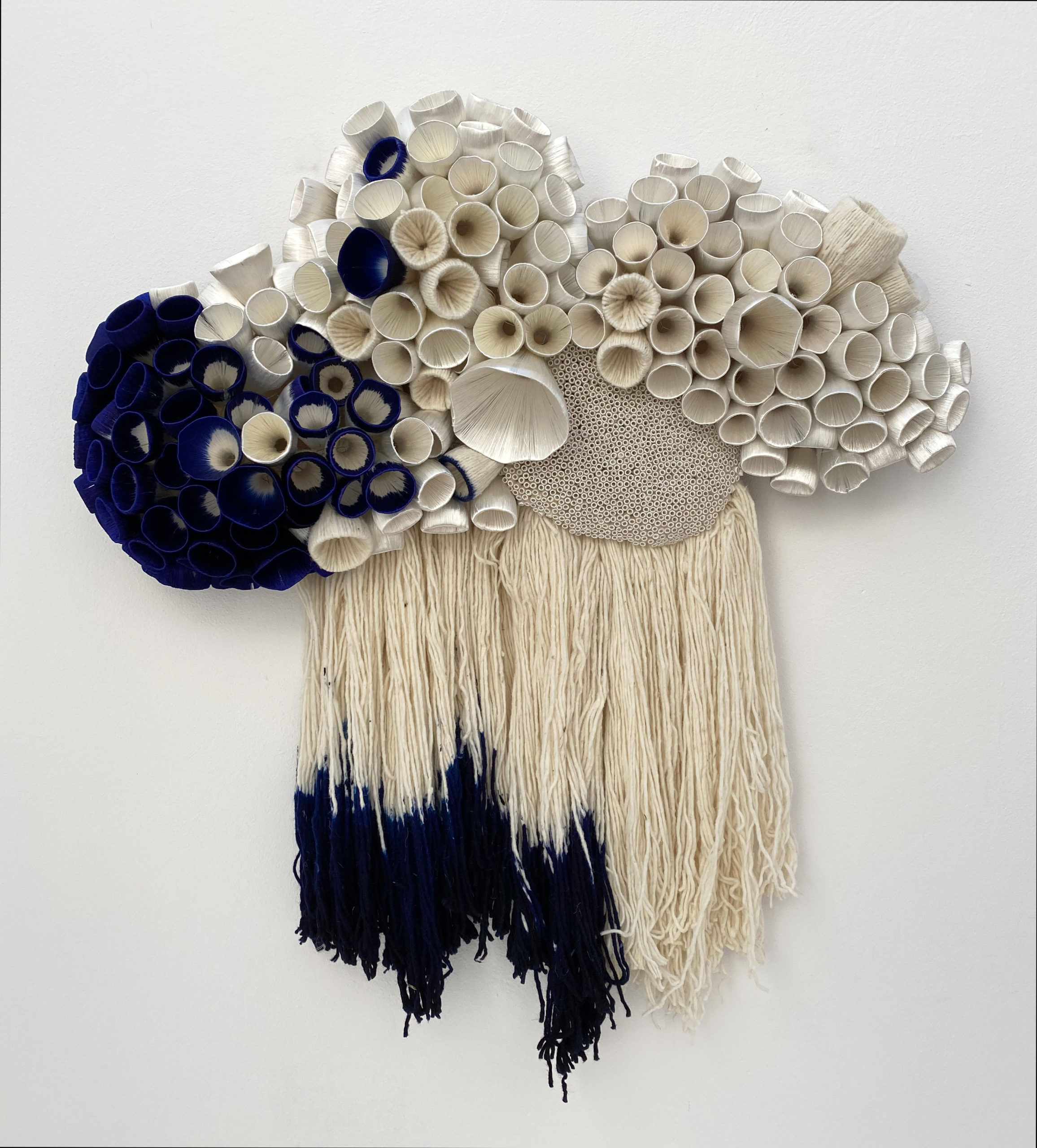
Ghizlane Sahli, MOM013, 2020
Courtesy: Ghizlane Shali
SpeakART: Which are your sources of inspiration?
Ghizlane Sahli: Everything is a source of inspiration. It could be a taste of a good meal, a conversation with my kids, a person in the street, an exhibition, a painting, a music, a photography or a book. I wanna try to describe a feeling, an emotion through my work. I mostly use metafore with nature to describe those emotions…
SpeakART: Your artworks can be categorized into bas-reliefs, sculptures or volumes, drawings: can you tell us something more about the relationship between these different results?
Ghizlane Sahli: They are no relations between these results, except that they are different ways for me to express my researches of a subject.
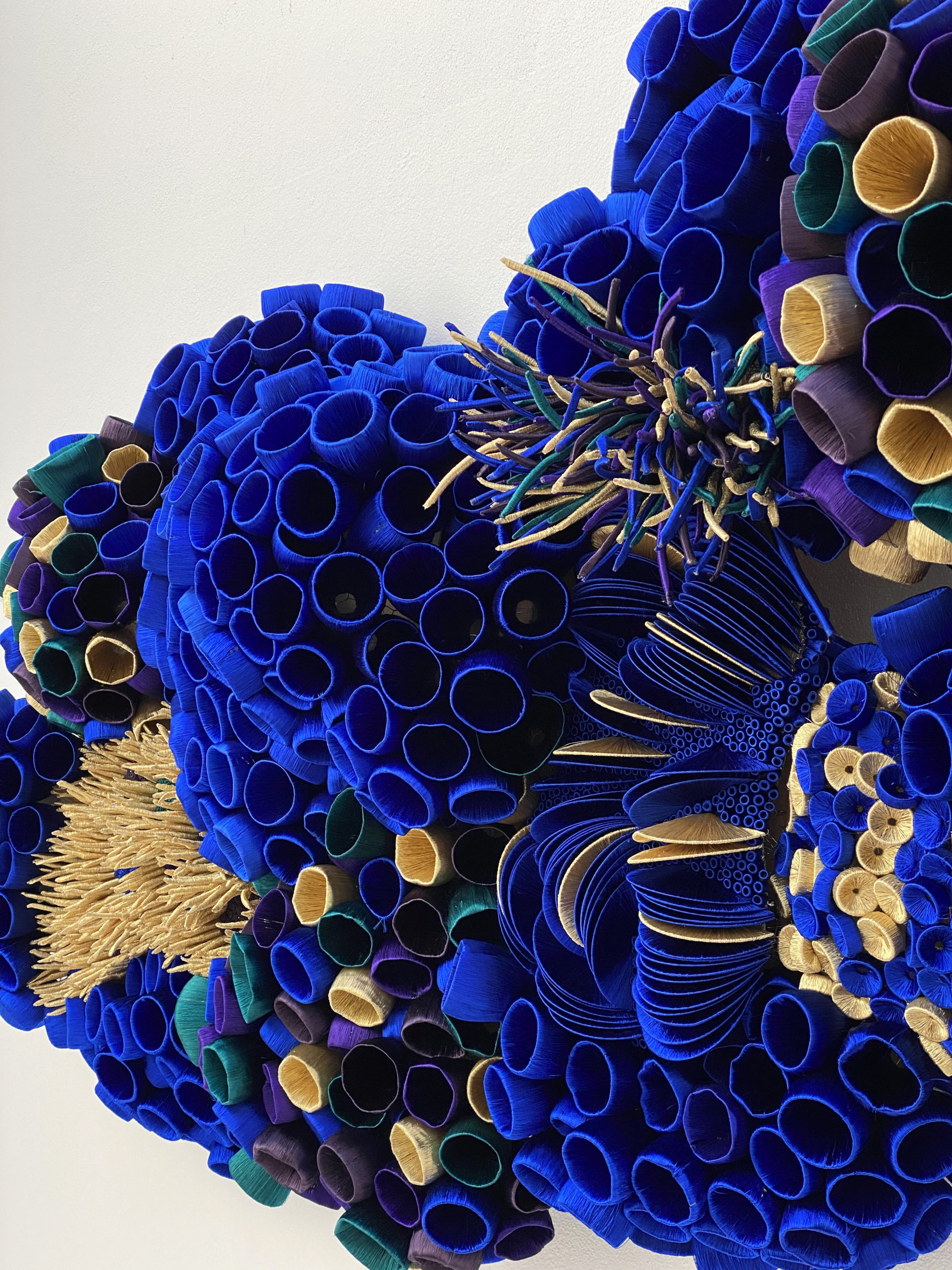
Ghizlane Sahli, MOM014, 2020
Courtesy: Ghizlane Shali
SpeakART: Recycling and re-use strongly underlies your production, as you often use plastic and garbage material (for example bottles): what reflections would you like to arouse drawing the attention to environmental issues?
Ghizlane Sahli: In my work the relation with the waste is more spiritual than environmental. The garbage is very universal. Every society produces waste. This waste is the reject from the society. When I use it, I always have that feeling that each object had a soul and a previous life and when I transmute it using the silk , each alveoles bring it’s own energy, and the accumulation of all the different energies becomes the artwork with its own emotion and own energy. Not to talk about the process of creation that is also very spiritual. The different steps collecting, washing, cutting, embroidering… of making the artworks are all very meditative. The same gesture is repeated many, many times with no intellectuality. It becomes like a trance.
SpeakART: We can say that the “Alveoles” are your distinctive shape: what do they represent for you and for the people who look at your works?
Ghizlane Sahli: I can tell what the alveoles represents for me but not what they represent for people looking at them. The alveoles is for me the unit of my work. They are made with a plastic garbage covered mostly by silk. Every artwork is composed by hundreds of alveoles. They are like the cells that create the material. They accumulate and grow in a very organic way. I first sculpt a shape made of metal mesh were I attach the alveoles. This shape is the matrice of the artwork. It is like a skeleton.
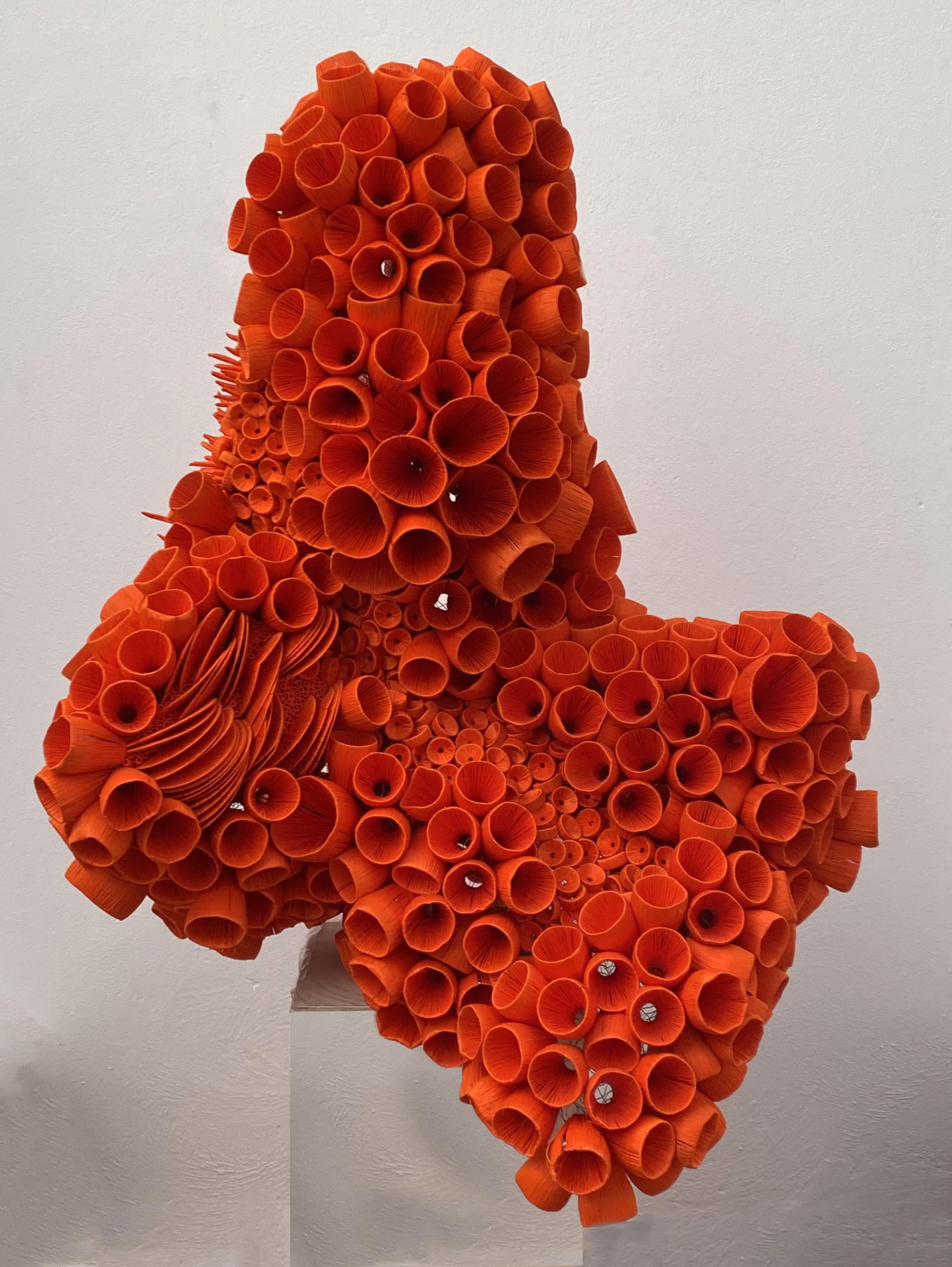
Ghizlane Sahli, MOMS002, 2020
Courtesy: Ghizlane Sahli
SpeakART: Could you tell us something more about the collective Zbel Manifesto and your contribution in it?
Ghizlane Sahli: Zbel manifesto is a collective of 3 peoples. Katia Sahli, my sister, a lawyer, Othman Zine, a Photograph and a movie director, and myself. Our aims is to create installations made with waste. We make observations. We are not giving lessons.We just ask questions about the world we are living in.
SpeakART: How would you summarize your artistic vision in a kind of statement?
Ghizlane Sahli: I would say I embroider, I sculpt and I draw. I tell the story of an interior and organic journey, carried by a universal dimension. I play with materials, scales and volumes, by using thread (silk, wool, plastic or metal) to weave and celebrate the subjects that stimulate me: The human body, in general, and the female body in its intimacy.. I usually use metaphor with nature to express that interiority and emotions. Pure emotion, cleansed of any religious, social, educational or generic contribution. I finally really enjoy transforming the material, exulting it and giving it a meaning.
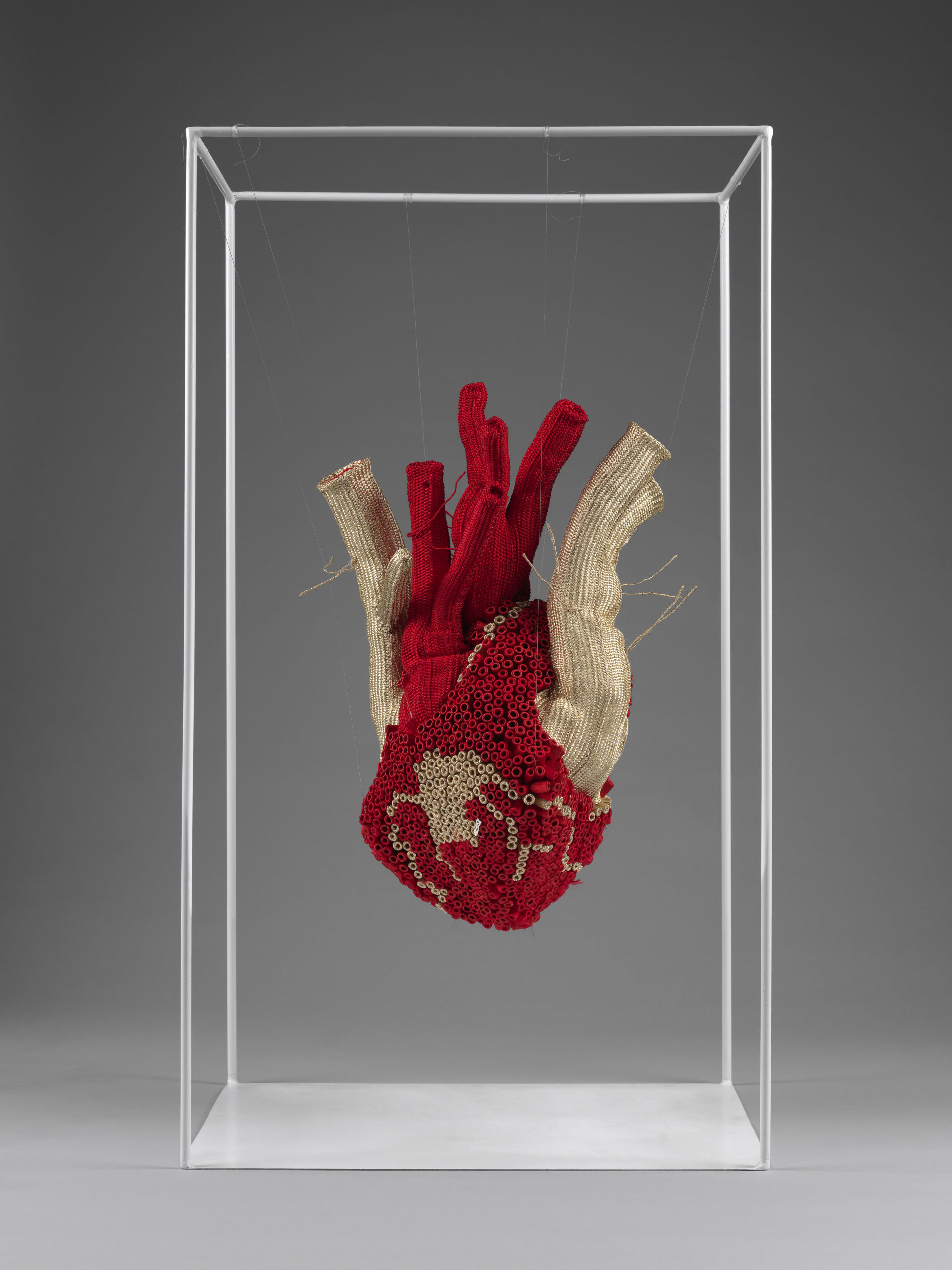
Ghizlane Sahli, Histoires de tripes
Credits: Victoria and Albert Museum
Courtesy: Ghizlane Sahli
SpeakART: How do you consider Moroccan artistic environment?
Ghizlane Sahli: The artistic environment in Morocco is very rich. It grew a lot during these last 20 years. The young scene is very creative.
SpeakART: Your are represented by David Bloch Gallery in Marrakesh, but also by different European galleries (Primo Marella Gallery – Milan, Sulger Buel Gallery – London, Sakhile&Me – Frankfurt): how do you perceive the reception of African contemporary art in the European market?
Ghizlane Sahli: These last years, there have been specially some fairs like 1.54 in London, New York and Marrakech, AKAA in Paris. All these new museums that opened in Africa: Macaal in Marrakech, Zeit MOCA in Johannesburg, Le Palais de Lomé in Lomé… All these biennals in the continent, (Lagos, Bamako, Ouagadogou, Kinshasa, Casablanca, Marrakech…).. There are also many auction house that are interested in African artists. That way, The African scene is very present in Europe and else where. The African continent is a very rich and multicultural place. The artist have a lot to say, about their history, their identity, their memories and their culture.
